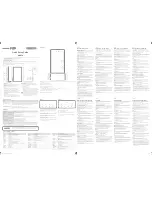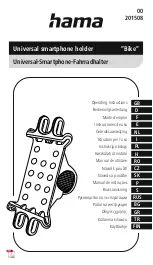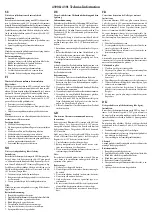
C-1
Appendix C. General Theory of Heat
Flux Sensors
This appendix discusses the general theory and characteristics of heat flux sensors similar
to the HFP01.
C.1 General Theory
FIGURE C-1. General characteristics of a heat flux sensor
When heat is flowing through the sensor in the indicated direction, the filling
material will act as a thermal resistance. Consequently, the heat flow,
ϕ
, will
follow a temperature gradient across the sensor, flowing from the hot to the
cold side. Most heat flux sensors are based on a thermopile—a number of
thermocouples connected in series. A single thermocouple will generate an
output voltage that is proportional to the temperature difference between the
joints (copper-constantan and constantan-copper). Provided that errors are
avoided, the temperature difference is proportional to the heat flux—depending
only on the thickness and the thermal conductivity of the sensor. Using more
thermocouples in series will enhance the output signal. In FIGURE
, the
joints of a copper-constantan thermopile are alternatively placed on the hot and
the cold side of the sensor.
The thermopile is embedded in a filling material, usually plastic.
Each individual sensor has its own sensitivity, E
sen
, usually expressed in Volts
output, V
sen
, per Watt per square meter heat flux,
ϕ
. The flux is calculated:
ϕ
=V
sen
/E
sen
The sensitivity is determined by the manufacturer, and is found on the
calibration certificate that is supplied with each sensor.
When used for measuring soil heat flux, heat flux sensors such as the HFP01
reach a limited level of accuracy. This is because thermal parameters of soil are
constantly changing (soil moisture content) and the ambient temperature is not
fixed. A realistic estimate of the error range is
±
20% over a thermal
conductivity range from 0.1 to 1.7 W/mK (dry sand to water-saturated sand)
across the temperature range of –30 to 70 °C. The accuracy is better if the soil
conditions are closer to the reference conditions (see the sensor specifications)
and, in an actual experiment, the expected error range will probably be
±
10%.
constantan
filler



































